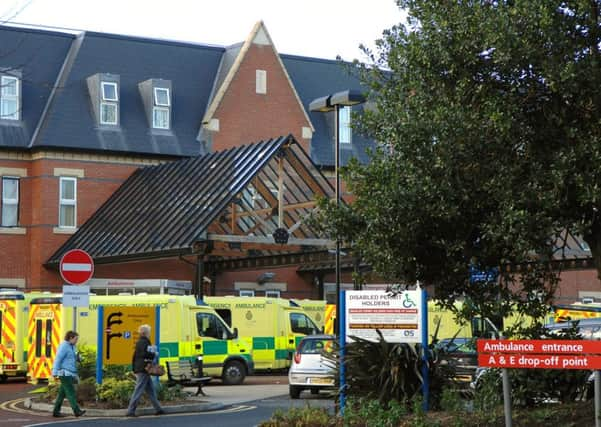Ambulance crews face long delays at hospital


New figures show there were delays of more than 30 minutes in patients being passed to hospital staff in 10.7 per cent of cases in June, while 1.74 per cent of cases waited for more than an hour.
That is a large increase on the delays in June 2015, when 2.92 per cent faced delays of 30 minutes and just 0.33 per cent waited more than 60 minutes.
Advertisement
Hide AdAdvertisement
Hide AdThe aim is for people to be passed on in 15 minutes, with a 30-minute handover delay target for the year of 6.3 per cent and 60 minutes at 0.9 per cent.


The delays have been longer since November, when the 30-minute wait rose massively from 5.46 per cent in October to 10.11 per cent.
It peaked in May, with 12.88 per cent of handovers taking more than 30 minutes and 3.41 per cent more than an hour.
That followed the closure of Chorley And South Ribble Hospital’s A&E department in April and a rise in the number of people going to Wigan.
Advertisement
Hide AdAdvertisement
Hide AdDr Tim Dalton, a GP and chairman of NHS Wigan Borough CCG, said: “Over the last few months we have had a busier A&E than we would normally expect in summer with more people visiting and more ambulances being called out.


“A large number of these patients are seriously ill and do need A&E. However it puts Wigan A&E under pressure and makes it harder for the local NHS to meet national targets.”
A North West Ambulance Service (NWAS) spokesman said: “The trust has seen a significant rise in the number of serious life-threatening red calls received over the last 12 months, which is currently continuing each month.
“Patients in this category are in a serious condition and need to be treated in hospital. This means the number of patients arriving at emergency departments by ambulance has also increased.
Advertisement
Hide AdAdvertisement
Hide Ad“This undoubtedly then puts pressure on the hospitals and unfortunately means that ambulance crews are waiting longer to handover patients into their care.”
Steps are being taken to address the delays as the extra demand continues.
New roles have been created, including an ambulance liaison officer to track and co-ordinate ambulances, a “pathfinder” GP who works with the ambulance service to treat patients at home instead of at A&E, and a CCG employee based at the hospital to help get patients from A&E to the right ward and then discharged.
The NWAS spokesman said: “This issue is one which we have discussed at length with our commissioners and are working alongside our NHS colleagues to address. One such initiative includes the placement of ambulance liaison officers in emergency units to ensure timely handovers.
Advertisement
Hide AdAdvertisement
Hide Ad“Trust local management teams regularly visit hospitals across the region so our organisations can work together to improve handover times.”
Dr Dalton said: “We are working closely with the hospital and all health and social care partners to improve the situation and make sure that patients are referred to more appropriate, alternative services where possible. We are also doing a lot to understand where the system can be more efficient to help it cope with the extra number of seriously ill patients.
“All the service lead officers from across the NHS and council meet to review performance that week and discuss what can be improved or done differently. This is helped by WiganLive, an IT system that allows us to see how the whole system is working at any one time.”